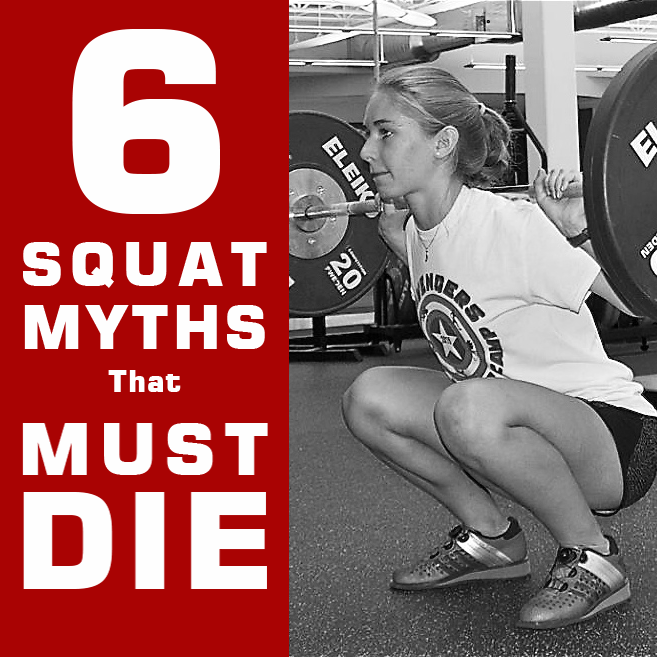Six Squat Myths that Must Die

Back squats have been a key component of the BFS Total Program since Day 1, which translates into 40+ years. It is unquestionably one of the single most productive exercises that can be performed in the weight room to increase overall strength and power. Nevertheless, the exercise still has its critics and myths continue to haunt us. Let’s address five of them.
1. Squats decrease knee stability. This is a myth BFS has been fighting for a long time. This myth can be traced back to 1961 when college professor Karl K. Klein and medical doctor Fred L. Allman, Jr. published research that found that squats increased knee laxity, thus increasing the risk of knee injury. The results of the study have never been reproduced, and later research found that populations that performed squats, such as powerlifters and Olympic-style weightlifters, possessed more stable joints that other populations.
2. Squats make you slow. Perhaps because the squat is performed relatively slowly, there has been a concern among many sports coaches that squats will make athletes slow. We know this to be false, and there is considerable research to discredit this myth, such as the following meta-analysis: “Increases in Lower-Body Strength Transfer Positively to Sprint Performance: A Systematic Review with Meta-Analysis.” This review examined 15 studies and a total of 510 subjects, primarily looking at running tests less than 30 meters. According to the researchers, the bottom line is that “Increases in lower-body strength transfers to sprint performance.”
3. Squats grind down cartilage and cause arthritis. As the population gets older, there is concern that squats may not be good for the joints. The idea that squats could cause degenerative issues in the joints was addressed in a research paper published in Sports Medicine in 2013. The researchers found what most life-long powerlifters and weightlifters believe. Note the authors of the paper, “Concerns about degenerative changes of the tendofemoral complex and the apparent higher risk for chondromalacia, osteoarthritis, and osteochondritis in deep squats are unfounded.”
4. You should perform squats with a flat back. Squatting with a flat back is often a technique recommended in aerobic classes to increase the work of the glutes, but many strength coaches are now recommending this method when using heavy weights. This is not how the body works.
The issue is that there is no single perfect posture of the spine; for example, at BFS we teach that when lifting heavy weights off the floor in a deadlift the back should be slightly arched (anterior pelvic tilt), but when lifting weights overhead the back should be more flat (posterior pelvic tilt). This shift in posture is called the lumbopelvic rhythm.
The late Dr. Mel Siff, one of the most respected sports scientists in the field of biomechanics, explained the lumbopelvic rhythm as follows: The posterior pelvic tilt is the appropriate pelvic rotation for sit-ups or lifting objects above waist level…the anterior pelvic tilt is the correct pelvic rotation for squatting [and] lifting heavy loads off the floor.
5. The Deadlift is a good substitute for squats. The deadlift is a great core exercise that compliments the squat by more aggressively working the trapezius, grip, and hamstrings. The issue with the deadlift is that it doesn’t work the legs through a large range of motion as the squat and as such doesn’t provide complete development of the quads. Performing lower body exercises only through a partial range of motion tightens up the tendons, making athletes more susceptible to injuries, and reduces knee stability. Rather than choosing between squats and deadlifts, include both of these powerful exercises in your program.
6. Performing leg extensions before squats works the quads harder. In 1968 magazine publisher Robert Kennedy introduced the concept of pre-exhaustion, which involved performing an isolation exercise (such as leg extensions) immediately before a compound movement that involved the same muscle (such as squats). The idea was that this training method would work the muscle used in the isolation exercise harder. However, research published in the May 2003 issue of the Journal of Strength and Conditioning Research found that because lighter weights are used in the second exercise, the strength training effect is reduced. The leg extension is fine as an auxiliary exercise, but they should be performed after squats, not before.

The squat is unquestionably the most persecuted exercise in the fields of athletic and physical fitness. Many myths based on misinformation have persisted about the squat for over the past half century, but both scientific research and real-life experience have proven that the squat is still the King of Lifts for athletes and the general population.
